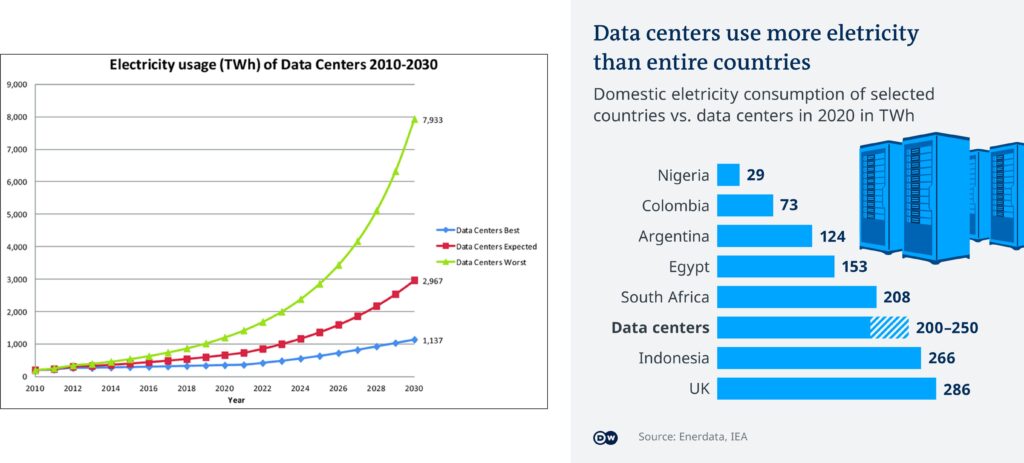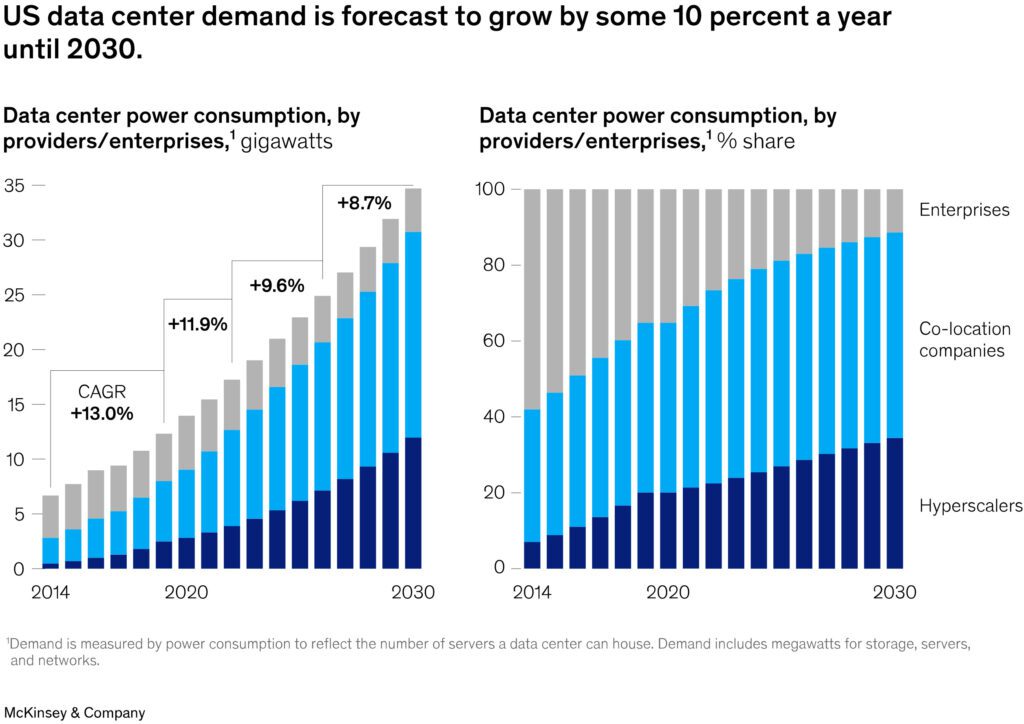- In today’s world, where sustainability is more critical than ever, the energy industry faces a pressing challenge: lowering energy consumption.
- The energy industry generates a massive amount of data, with estimates ranging from 100 to 200 exabytes per year. Data Centers play superhero roles in managing and storing all this information.
- By adopting data-driven strategies, optimizing energy consumption, and making sustainable choices, organizations become catalysts for change. In order to decrease energy consumption and enhance data management practices, organizations can adopt techniques like metadata analysis.
In today’s world, where sustainability is more critical than ever, the energy industry faces a pressing challenge: lowering energy consumption. As energy enterprises strive to reduce energy consumption and implement innovative technologies like the smart grid and advanced analytics, there’s one area that often gets overlooked. It’s an area that is perceived as unstructured and, to put it bluntly, a mess to dive into. We’re talking about data—an abundant resource within energy enterprises.
Yes, you heard it right! By exploring the extensive pool of data available to them, energy enterprises have the opportunity to unlock valuable insights, make well-informed decisions, optimize energy usage, and even minimize their environmental footprint. While it may seem overwhelming initially, tapping into the power of data holds incredible potential for catalyzing positive change within the energy industry. It’s an effective approach for addressing challenges at their core and preventing the cascading effects that can result in energy waste. So, let’s dive into this blog and explore the impact of data sprawl, the sneaky issue of unstructured data, and the game-changing solution of metadata analytics in transforming energy consumption within organizations.
The Energy Consumption Puzzle in Your Own Organization
The energy industry generates a massive amount of data, with estimates ranging from 100 to 200 exabytes per year. Data Centers play superhero roles in managing and storing all this information. These powerhouses of computing consume electricity like nobody’s business! They fuel everything from cloud storage and digital services to artificial intelligence and data analytics. In fact, did you know that in 2022 data centers accounted for:
- 220 terawatt-hours (TWh) electricity consumption
- 2.5% to 3.7% of global GHG emissions
This represents a 10% increase from 2020. That’s a staggering number! Data centers are hungry creatures when it comes to electricity consumption. They require a significant amount of power to run their servers, cooling systems, and other infrastructure. In fact, according to a study by Lawrence Berkeley National Laboratory, data centers in the United States alone consumed over 90 billion kilowatt-hours of electricity in 2020. That’s equivalent to the annual energy consumption of approximately 8 million households, and the number has already risen by 10%! The surge in data center operations has had a profound impact on the energy industry. With the exponential growth of digital services and the ever-increasing demand for data storage, the energy industry has been forced to adapt to meet the rising power needs of data centers. This shift has led to a reconfiguration of energy generation, transmission, and distribution systems to accommodate the substantial electricity demand from data centers.


Data Hoarding: The Hidden Impact of Unstructured Data
Now, here’s where things get intriguing. Behind the scenes of data centers lies a hidden culprit: unstructured data, which surprisingly accounts for a whopping 80 to 90 percent of the data generated. Think of it as that overflowing closet you haven’t organized in ages. Unstructured data encompasses a vast array of information stored within organizations, lacking a predefined format. We’re talking about text, images, videos – you name it. But here’s the real menace: many organizations are unaware of the full extent of their unstructured data or where it’s lurking!
This gives rise to what we call data sprawl – scattered, unstructured data spread across different storage systems, physical locations, and environments. Managing and securing this data becomes an arduous task. Moreover, extracting meaningful insights from it becomes even more challenging. Questions start to surface: Where exactly is the data located? Who holds ownership over it? How old is the data? When was it last accessed? What proportion of the data is considered “hot” versus “cold”? Should all the data be retained, or can some of it be deleted, archived, or tiered? And let’s not forget about the number of open shares that exist! Unstructured data presents a complex puzzle for organizations to unravel.
Metadata Analytics is the Answer
Imagine a world where data is like a wild, untamed jungle, teeming with information but impossible to navigate. In this digital wilderness, data centers struggle to keep up with the ever-expanding growth of unstructured data. However, there is a powerful tool that can bring order to this chaos and save energy along the way: metadata analytics!
Metadata analytics refers to the process of extracting valuable insights and patterns from the metadata associated with digital information. Metadata, in simple terms, is data about data. It provides vital information about the who, what, when, and where of data, allowing us to understand its context and significance. Now, let’s delve into how it can tame the unruly sprawl of unstructured data and, in turn, reduce energy consumption in data centers.

- Efficient Data Navigation: Picture yourself searching for a specific document in a massive pile of papers. Without any labels or organization, it’s an exhausting and time-consuming endeavor. Metadata analytics brings order to this chaos by tagging and categorizing data. By indexing documents, files, and folders with metadata, data centers can swiftly locate and retrieve information. This streamlined process reduces the time spent searching, which translates into less energy consumption by data retrieval systems.
- Data Center Optimization: Data centers are power-hungry beasts, devouring massive amounts of energy to process and store data. However, the more unstructured data sprawl there is, the more resources data centers require. With metadata analytics, we can minimize the storage footprint of unstructured data. By intelligently classifying and organizing data based on its metadata, redundant or outdated information can be identified and discarded. This optimization leads to reduced storage needs, ultimately cutting down on the energy consumption of data centers.
- Intelligent Data Lifecycle Management: Data has a lifecycle, just like living organisms. Metadata analytics can be used to monitor and manage this lifecycle efficiently. By analyzing metadata attributes such as creation date, access frequency, and relevance, data centers can make informed decisions about data retention or archival. Unnecessary data can be pruned, preventing data centers from becoming digital hoarders and minimizing the energy required to store and maintain vast amounts of unneeded information.
- Predictive Insights and Proactive Measures: Metadata analytics not only unlocks the secrets of data but also provides valuable insights into patterns and trends. By analyzing metadata, data centers can gain a holistic understanding of how data is used and accessed. This knowledge allows them to predict future data growth and proactively allocate resources, optimizing energy usage. By staying one step ahead, data centers can adapt to changing demands, preventing energy waste and reducing their environmental impact.
Metadata analytics, armed with its transformative capabilities, has the power to revolutionize the way enterprises understand, manage, and utilize data. By harnessing its potential, the energy industry can reign in the sprawling chaos of unstructured data, leading to a more efficient and sustainable future for data centers. Let’s look at a few examples of organizations that have utilized metadata analytics to reduce their energy consumption:
- Intel: Intel, a global leader in semiconductor manufacturing, implemented metadata analytics to optimize energy consumption in its data centers. By analyzing metadata related to server utilization, cooling systems, and data storage, Intel gained insights into energy-intensive areas and identified opportunities for improvement. They optimized server utilization, implemented efficient cooling strategies, and leveraged advanced power management techniques. These efforts resulted in significant energy savings and improved overall data center efficiency.
- British Telecom (BT): BT, a telecommunications company, leveraged metadata analytics to reduce energy consumption in their network infrastructure. By analyzing metadata related to network traffic, data flow, and equipment performance, BT identified areas of inefficiency and optimized their network operations. They implemented intelligent routing algorithms, consolidated network infrastructure, and optimized power management strategies. These measures led to substantial energy savings and more energy-efficient network infrastructure.
- Pacific Gas and Electric Company (PG&E): PG&E, a utility company in California, utilized metadata analytics to enhance energy efficiency in its operations. By analyzing metadata from smart meters, energy consumption patterns, and customer data, PG&E gained insights into energy usage trends and identified opportunities for optimization. They developed targeted energy efficiency programs, provided personalized energy usage feedback to customers, and optimized grid operations. These efforts resulted in reduced energy consumption and improved grid efficiency.
- Schneider Electric: Schneider Electric, a global energy management and automation company, employs metadata analytics to drive energy efficiency in various industries and sectors. By analyzing metadata related to energy usage, equipment performance, and operational data, Schneider Electric helps organizations optimize their energy consumption. They provide data-driven insights and recommendations, implement energy management systems, and deploy smart solutions to monitor and control energy usage. These initiatives have led to significant energy savings and improved sustainability for their clients.
- Google: A technology and internet services giant, Google has implemented metadata analytics to optimize energy consumption in their data centers. By analyzing metadata related to server utilization, cooling systems, and energy monitoring data, Google identifies areas of inefficiency and develops innovative solutions. They utilize advanced analytics and machine learning algorithms to optimize energy usage, improve server efficiency, and employ smart cooling strategies. Google’s data-driven approach has resulted in substantial energy savings and increased overall data center efficiency.
The Global Impact of Energy Consumption
In conclusion, reducing energy consumption isn’t just a responsibility that falls on energy organizations – it’s a global imperative. As energy consumption continues to soar, it becomes vital for each individual organization to step up and take accountability for their energy usage. By adopting data-driven strategies, optimizing energy consumption, and making sustainable choices, organizations become catalysts for change. In order to decrease energy consumption and enhance data management practices, organizations can adopt proactive measures. These include conducting regular energy audits to identify areas for improvement, embracing automation and smart technologies to streamline operations and minimize energy waste, educating and engaging employees to foster a culture of energy efficiency, and collaborating with experts and sustainability consultants to gain valuable insights. Informed decision-making, optimized infrastructure, and sustainable practices combined with the power of data can help address the global energy crisis and pave the way for a more sustainable and prosperous world. Remember, it’s not a one-time effort – continuous monitoring, measurement, and improvement are essential to keep the momentum going.
If you’re unsure about where to begin, our team at Data Dynamics is here to assist you. Our award-winning unstructured data management platform utilizes artificial intelligence and machine learning technologies to provide enterprises with critical insights into unstructured file metadata, enabling accurate storage visibility and infrastructure optimization. By facilitating data alignment and refinement, we empower our customers to transform data from mere storage to valuable business assets. Trusted by 28 Fortune 100 companies and 4 Fortune 500 energy enterprises, our platform delivers tangible business outcomes and scales to meet global enterprise workloads. With Data Dynamics, enterprises can eliminate the use of individual point solutions and siloed data views, instead utilizing a single software platform to structure their unstructured data, unlock data-driven insights, secure data, ensure compliance and governance, and drive cloud data management. Our vision is to help enterprises achieve data democratization, enabling users of all technical backgrounds to instantly access, understand, and derive maximum insights from unstructured data sprawls.
To learn more about Data Dynamics, please visit – www.datadynamicsinc.com or contact us at solutions@datdyn.com or call us at (713)-491-4298 or +44-(20)-45520800.






